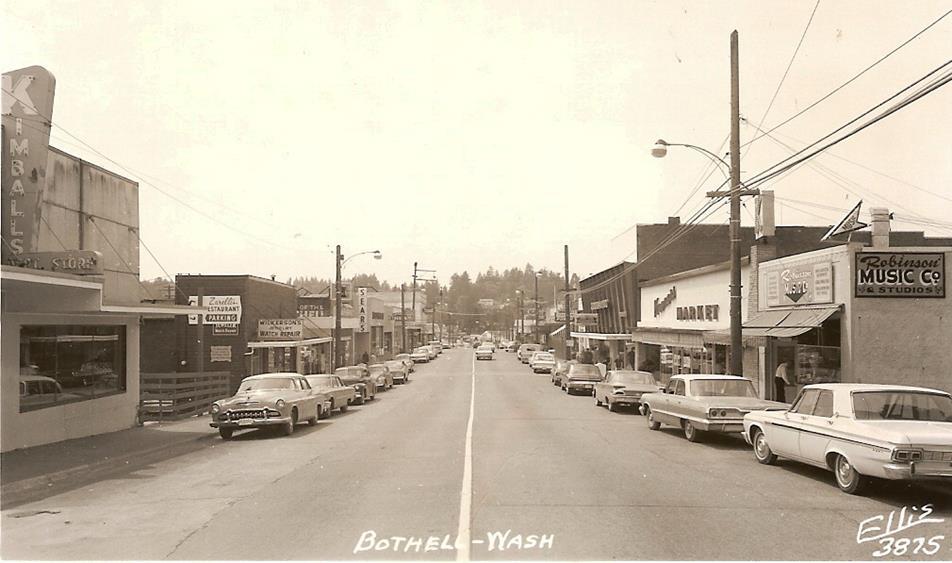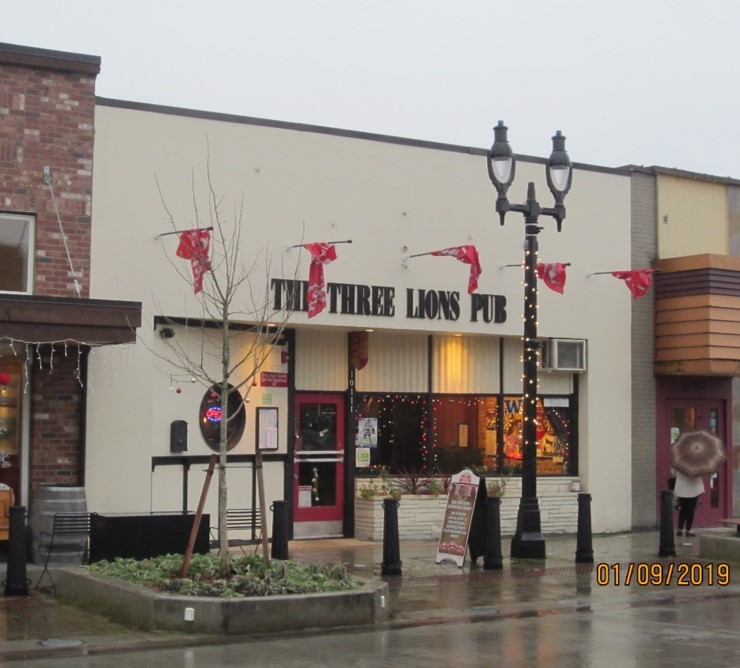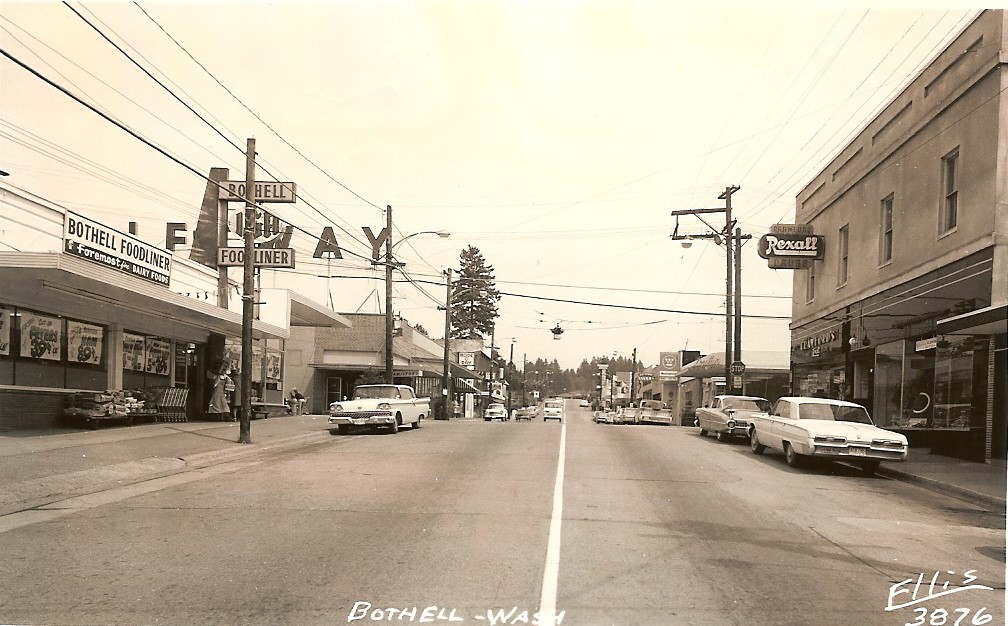Guest Post: Bothell’s Downtown Landmark and Historic District Feasibility Study

The Bothell Landmark Preservation Board (LPB) is a seven-member advisory board tasked with identifying and encouraging the conservation of the city’s historic resources. In addition to maintaining the Bothell Register of Historic Landmarks and reviewing new downtown development, some of their projects include a survey of Bothell’s mid-century resources, their book Bothell Then and Now, and a downtown walking tour. Here, they share how 4Culture fundind has supported those efforts this past year:
Downtown Bothell is changing! Over the last several years, the LPB has watched as multi-story, mixed-use buildings have replaced many of the historic homes and commercial buildings in the city’s downtown core. While necessary to accommodate an influx of new residents, the danger of losing Bothell’s sense-of-place is very real. Last year, the LPB tasked their staff consultant with developing a project that would examine the area’s remaining historic resources with the hope of guiding some property owners toward rehabilitation rather than demolition.
Bothell’s Downtown Landmark and Historic District Feasibility Study was devised to take a look at all of the pre-1980 buildings downtown, especially the ones along Main Street, and determine how many of them would qualify for the local register. Yes, that says pre-1980! In a broad study like this it was important to look at buildings that could become eligible in the next few years. Not to mention that some of the building styles from the 1970s and 1980s are now recognized as historically significant.

The study found that downtown Bothell could support a local register historic district centered around Main Street. Of the 54 buildings studied, half are potentially eligible either individually or as a contributing property in a historic district. Nearly half of those were either built or “modernized” during the mid-20th century period. When people think about a city’s historic Main Street or downtown core, the earliest buildings often come to mind but their midcentury counterparts and modernizations can often be just as significant on their own.
Looking through photographs of Bothell’s Main Street from before 1900 through the 1970s and ‘80s up to the present told an interesting story of evolution. Small wooden buildings constructed at the end of the 19th century were replaced with brick and concrete storefronts in the early decades of the 20th century. A little later, in the late-1930s, ‘40s and ‘50s, many of those brick storefronts on Main Street were “modernized,” meaning that outdated historic styles were covered with new Streamlined Moderne, Art Deco and Googie facades. Some of those remain, like at Three Lions Pub and Hana Sushi, but others were covered again later in the century with Mansard-esque facades. Today, there are a mix of building styles and eras represented downtown.

Another part of the study’s mission was to inform property owners about the various financial incentives available to help with building rehabilitation: Special Tax Valuation, Federal Historic Tax Credits and, of course, the 4Culture Landmarks Capital grant! Each building was evaluated with a brief section about which incentives might apply. Telling the story of Bothell’s downtown development, the study is a vehicle that will help residents and property owners see the significance of individual buildings, both old and not-so-old, and how they fit into the history of downtown. Hopefully, owners of downtown properties will be inspired to nominate their buildings to the local register and take advantage of some of the financial incentives available for rehabilitation.
